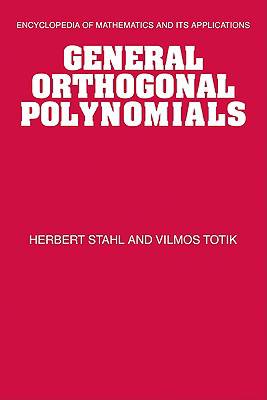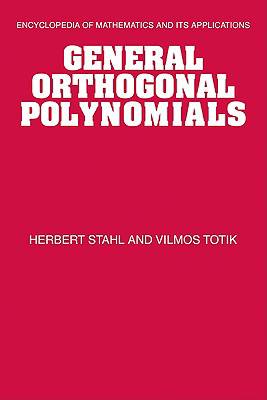
- Afhalen na 1 uur in een winkel met voorraad
- Gratis thuislevering in België vanaf € 30
- Ruim aanbod met 7 miljoen producten
- Afhalen na 1 uur in een winkel met voorraad
- Gratis thuislevering in België vanaf € 30
- Ruim aanbod met 7 miljoen producten
Zoeken
Omschrijving
In this treatise, the authors present the general theory of orthogonal polynomials on the complex plane and several of its applications. The assumptions on the measure of orthogonality are general, the only restriction is that it has compact support on the complex plane. In the development of the theory the main emphasis is on asymptotic behavior and the distribution of zeros. In the first two chapters exact upper and lower bounds are given for the orthonormal polynomials and for the location of their zeros. The next three chapters deal with regular n-th root asymptotic behavior, which plays a key role both in the theory and in its applications. Orthogonal polynomials with this behavior correspond to classical orthogonal polynomials in the general case, and many extremal properties of measures in mathematical analysis and approximation theory with this type of regularity turn out to be equivalent. Several easy-to-use criteria are presented for regular behavior. The last chapter contains applications of the theory, including exact rates for convergence of rational interpolants, best rational approximants and non-diagonal Pade approximants to Markov functions (Cauchy transforms of measures). The results are based on potential theoretic methods, so both the methods and the results can be extended to extremal polynomials in norms other than L2 norms. A sketch of the theory of logarithmic potentials is given in an appendix.
Specificaties
Betrokkenen
- Auteur(s):
- Uitgeverij:
Inhoud
- Aantal bladzijden:
- 268
- Taal:
- Engels
- Reeks:
- Reeksnummer:
- nr. 43
Eigenschappen
- Productcode (EAN):
- 9780521415347
- Verschijningsdatum:
- 24/04/1992
- Uitvoering:
- Hardcover
- Formaat:
- Genaaid
- Afmetingen:
- 152 mm x 229 mm
- Gewicht:
- 562 g

Alleen bij Standaard Boekhandel
+ 435 punten op je klantenkaart van Standaard Boekhandel
Beoordelingen
We publiceren alleen reviews die voldoen aan de voorwaarden voor reviews. Bekijk onze voorwaarden voor reviews.











